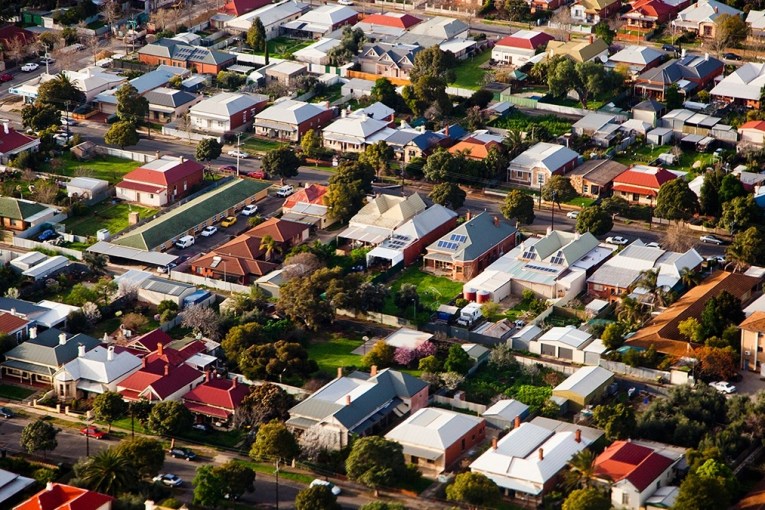The Stats Guy: Rebuilding cities for an ageing population


Ageing will have a massive impact on the Australian population.
In a past column, I tried to warn everyone in Australia about the massive impact of the ageing of the population. The logic was pretty simple: Half of us will live past the age of 85. Yay to that half of us. Half of us who will make it past 85 will need care. By 2035 (that’s only 12 years away) we double the 85+ cohort to reach one million people.
Australia needs to prepare now!
In another column, I explained why we currently have a skills shortage and how demographics suggest it will persist for the next fifteen years or so. Automation is our friend as it can free up workers from all sorts of industries to move into care and medical jobs. Importing labour from overseas also helps but it’s not guaranteed that Australia can forever onwards import workers as I explained a few months ago.
But we need to do even more than filling care and medical jobs to allow our elderly to have decent quality of life.
Australian houses will need to be modified. Wider doors to fit a wheelchair, perfectly level slide doors to the garden to minimise tripping hazards, non-slip flooring, larger light switches (Australian light switches are comically small and hard to operate), lifts in private homes, and accessible showers are just some of the common modifications that we will see.
The individualistically minded Baby Boomer (born 1946-63) generation will be very keen to continue living independently and such home modifications will help a lot. Any business operating in that space will do mighty fine in the next decades.
We need to do even more than that though. We need to change the built environment at a larger scale; we need to change how our cities operate. That’s a big ask but at least we can look to international case studies to see what modifications allow cities to age in dignity.
Let’s start with an easy win. Phoenix in Arizona, like countless cities across the world, changed their street signs. They picked an easier to read font and made the lettering bigger. Cities can easily adjust to this bit by bit as new signage goes up.
People aged 65+ record an average walking speed of 3km/h (the average adult tends to walk at 5km/h). Once you reach 80 your average walking speed declines to about 2km/h. In reaction to these decreases in mobility, Tokuyama in Japan compacted its urban footprint to cope with the aging of its population. Instead of having its aging population dispersed, planners made Tokuyama denser. By becoming less car-reliant, the local elderly have convenient access to healthcare in walkable distance.
This ensured that elderly people in Tokuyama stay independent for longer as they repeatedly train their sense of balance. The World Bank went as far as calling Tokuyama a global role model. Having your elderly living in car-dependent suburbs all but guarantees a faster decline of mobility, it ensures that people stay home more, and increases the likelihood of suffering from loneliness in old age.
Quick and simple fixes
These two quick case studies give us a flavour of the type of changes that are needed to adapt our urban environment to an ageing population.
That leads us to the important question of which locations in Australia most urgently need to adjust their built environment to cope with its ageing population. We can simply look at what share of the population is 65+. While some of the cohort will downsize and move away, most of them will age in place. The downsizing narrative in Australia is much exaggerated as most people want to age in place. Older Australians will tell you that they want to be carried out of their home – I guess that’s the ultimate downsizing but for our exercise today we can assume that most local 65-year-olds of today will be the local 75-year-olds of 2033.
On a state level, the differences aren’t that notable, but Tasmania and South Australia should most urgently invest into adjustments of the built environment.
Looking at our 100 largest towns we see stark differences in the age structure. In working towns like Karratha (3 per cent), Port Hedland (4 per cent), and Emerald (7 per cent) almost no one is aged over 65. These towns can blissfully ignore the needs of the elderly.
On the other end of the spectrum, towns such as Victor Harbor (43 per cent), Forster–Tuncurry (40 per cent), and Hervey Bay (32 per cent) must certainly undertake huge changes soon.
In the table below, look at the difference between the population aged 65+ and the population aged 75+ (or even 85+). The bigger the difference, the more people will roll into the next category over the coming decade. This means investments into old-age infrastructure become even more urgent. In Victor Harbor for example, currently 43 per cent are aged 65+ but only 21 per cent are aged 75+. This means in the next decade, as the town ages rapidly, general mobility declines are unavoidable, and the town should adjust accordingly.
Have a look at your town to understand the severity of the issue. While we are at it, I might as well show you the data for your local government area too. I would love councillors around the country to discuss this at their next meetings. Some regional councils will age at unbelievably high rates and only proactive measures can ensure appropriate structural changes.
Things get even wilder when we zoom to the suburb level. Here we can actually find an area where more than half of the population (51 per cent) is already aged over 65. The lovely seaside location of Tea Gardens–Hawks Nest is located an hour’s drive north of Newcastle. I can see why you might want to retire here. Only 6 per cent of the population are aged 85+ at this point.
Sooner or later the relatively young and active retirees will struggle with more and more mobility issues. Servicing this population adequately is a mammoth challenge. Once again, look for your suburb in the table to understand challenges that your suburb will face in the coming decade. Community organisations, local governments, and the free market can benefit from studying these tables in detail.
Today’s little exercise showed that many Australian cities and suburbs must seriously adapt their built environment to ensure their elderly citizens have an optimal quality of life. These adjustments won’t be easy or cheap to manage but at the very least they ensure that local leaders can score a taxpayer funded study tour to Tokuyama. In all seriousness, our towns and suburbs must learn quickly from the positive examples around the world. Let’s make global best practice the norm across Australia – the quality of life of our elderly (and we will hopefully all end up in that category eventually) depends on it.
Demographer Simon Kuestenmacher is a co-founder of The Demographics Group. His columns, media commentary and public speaking focus on current socio-demographic trends and how these impact Australia. Follow Simon on Twitter or LinkedIn for daily data insights in short format.








